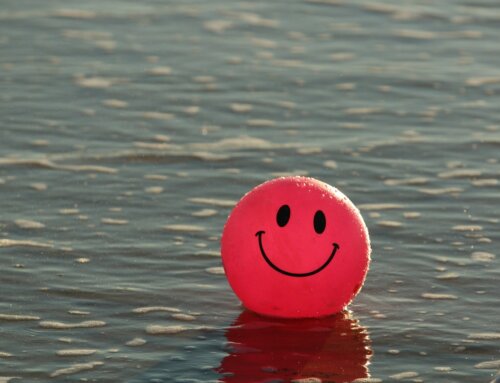
Photo by Aviva Braun
When I get together with married friends I’ve noticed that we often talk about our childbirth experiences, the latest head covering fashion or sale and mikveh visits. The exciting mikveh stories are almost always the honeymoon tales of being in the middle of no-where and having to go to the mikveh. While it’s always fun to tell those stories, sometimes real questions come up in the context of the discussion, particularly with regard to times when women are travelling or hiking and have to tovel in the sea or in a lake.
The question of going to the mikveh in a natural body of water has been dealt with by Rabbis throughout the generations (such as in Teshuvat HaGeonim, Shaarei Teshuva, 164). Rabbis in the modern era have grappled with this topic too. Rav Mordechai Eliyahu, in Darkei Tahara (page 177), permits a spring, the ocean or the sea for tevilla but recommends seeking advice from a Rabbi on the matter prior to immersion because there are a number of issues which must be taken into account.
The sea may be romantic and uplifting, but there are many issues that are involved in tevilla in a natural body of water. Firstly, before using the sea or other natural body of water for tevilla it is important to consult with a halakhic authority to make sure that the natural body of water we want to immerse in is a kosher mikveh. There are halakhic differences between a river, a spring, a lake and the sea. For example, when using an outdoor, natural body of water as a mikveh it can contain running water, whereas, a man-created mikveh (filled with rain water) must stand still. Furthermore, it’s important to keep in mind that a tevilla is only complete when all the barriers are removed between our body and the water (Shulchan Aruch, Yoreh Deah, 198:1). Therefore, we must be careful that nothing gets stuck in between our toes when entering the sea, such as tar (Yoreh Deah, 198: 34), wet sand or seaweed. The tovelet must lie down flat or go deep enough into the sea so that her whole body can go under the water at once. The sources advise making sure that the water is at least 24 cm above your belly button (Shulchan Aruch, 36, Taharat Habayit, Vol 3, 44).
When going to a mikveh in a public place such as the sea, every modest woman is nervous to be seen, especially considering the lack of garb that tevilla entails. In fact, the Shulchan Aruch writes, (Yoreh Deah, 198:34,) that a woman should not dip naked in a place where she may be seen, because then she is likely to be hasty and not careful with her tevilla. The Minchat Yitzchak (4, 35) writes that a tevilla wearing a skin tight bathing suit is not permissible because it is tight on the body. The best thing to do is wear a loose robe/dress, that way her nakedness is covered but it still allows the water to touch all parts of her body (Darkei Tahara, chapter 18, Page 177, Shulchan Aruch, Yoreh Deah, 198:46). Alternatively, when worried about being seen by others, one can enter the sea wearing a bathing suit and remove it once deep into the water before going under the water for the tevilla.
Furthermore, some women express fear when having to go to the mikveh in the sea. They are afraid of the water, darkness, undercurrents, and animals in the sea such as jellyfish. For this reason, many Rabbis are reluctant to allow women to go to dip in the sea. If, G-d forbid, something would happen to the woman, the Rabbi could feel responsible. If the tovelet is scared, then she may dip less times that she normally does in the regular mikveh.
The Rishonim (Rosh, Rashba, Raavad and more) write that a Jewish woman above 12 years of age (Balanit), should watch over a tovelet making sure all her hair is under the water during her tevilla. If she has nobody to watch facher, her husband can do the job. Her husband can be her Balan, and make sure her hair is under the water (Taharat Habayit, Part 3, section 45, based on the Noda BeYehuda). Yet, whether it be a friend or her husband the job is not easy. It is quite difficult to do see her hair when dipping in the sea at night. The Balanit can take along a torch. Alternatively, the tovelet is allowed to go on her own if she puts a loose netting on her head (Yoreh Deah, 198:40).
Travel is not the only reason women wish to dip in the sea. There are some G-d fearing Jews who live in places where there is no mikveh (India, New Zealand, little villages in Europe). Some women are actually more comfortable with the sea as their mikveh than going to the local mikveh where one frequently meets neighbours and friends. When a woman modestly goes to the sea for tevilla, she chooses what time of the evening is convenient and she chooses her balanit. Furthermore, she experiences her tevilla through a real connection to nature. Of course, in the local mikveh the source of the water is also natural and pure, yet tevilla in the sea can be purifying because it is immersing oneself at the source of nature. I’ve met a number of brides and married women who wish to go to the sea for tevilla because of the special spiritual experience. We learn from the passuk in VaYikrah (11:36) that a mikveh must be a body of water of a natural source, “אך מעין ובור, מקוה מים יהיה טהור”. Certainly, the sea is a “kosher” body of water for tevilla. Perhaps the body of water for purifying ourselves that is mentioned in the Torah is referring first to the sea, as written in Bereishit, (1) “ולמקוה המים קרא ימים”.
Next time you or your friends are stuck in some remote place, rather than postponing your tevilla, know that tevilla in the sea is allowed. Or even if it’s because you are interested in going to the sea for the uplifting experience, you can do so. But don’t forget a few things so the tevilla answers all the halakhic requirements (summed up in Darkei Tahara, as above), and most importantly make sure to do it safely! Enjoy!
Shira Kfir is a Pediatric Occupational Therapist, a qualified Yoetzet Halacha and answers questions on the Nishmat hotline. She was born in Melbourne, Australia, and lives in Gush Etzion.







Leave A Comment